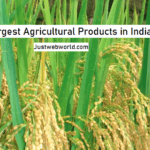Greenhouse production is revolutionizing the field of agriculture, offering innovative solutions to the challenges faced by traditional farming methods. Emphasizing controlled environments, resource efficiency, and year-round cultivation, greenhouse farming is making significant strides in sustainable agriculture.
In this article, we’ll look at the advantages of greenhouse farming as an agricultural method, exploring its positive contributions to our economy, environment, and society. Not only have greenhouses provided healthier crops with greater consistency than ever before, but their advancement has paved a path for ensuring global food production can take place sustainably in the future.

After reading today’s article, check out Silo’s breakdown of the benefits of greenhouse production for fresh produce by clicking the link here.
What is greenhouse production?
Greenhouse production, often referred to as controlled environment agriculture, is a method of growing plants and crops within a sheltered, regulated environment. This transformative approach to agriculture offers numerous benefits. Here are the key elements of greenhouse production:
- Controlled climate: Greenhouses allow for a controlled climate wherein temperature, humidity, light levels, and ventilation can be managed according to the needs of the crops.
- Year-round production: Irrespective of external weather conditions, crops can be grown throughout the year, ensuring a consistent food supply.
- Resource efficiency: Greenhouses utilize water and nutrients more efficiently, reducing waste and promoting sustainability.
- Protection from pests and diseases: The enclosed environment offers protection from pests and diseases, reducing the need for chemical pesticides.
- Increased yield: Due to the controlled environment and ability to grow year-round, greenhouse farming often results in higher yields than traditional farming.
11 positive impacts of greenhouse production
Now that we’ve explored the concept of greenhouse production and its key characteristics let’s delve into its positive impacts.
Economic benefits
- Boost to local economies: Greenhouse production can provide a substantial economic boost to local communities. It creates jobs, encourages local supply chains, and reduces the dependency on imported produce.
- Reduced production costs: With its controlled environment and efficient resource utilization, crop production costs can be substantially less compared to traditional farming, making this option attractive to many farmers.
Environmental benefits
- Sustainable resource use: Greenhouses are designed to recycle water, drastically reducing the amount of freshwater required in crop production and decreasing pesticide and fertilizer use — helping protect local ecosystems in the process.
- Reduced land use: Greenhouse farming requires less land than traditional farming methods. This could help preserve natural habitats and biodiversity by reducing the need for deforestation and land degradation.
Social benefits
- Improving food security: With the ability to grow crops year-round, greenhouses can significantly improve food security. This is especially crucial in regions with harsh climates where traditional farming is challenging.
- Healthier produce: Greenhouse production often results in healthier, higher-quality produce. This not only benefits consumers’ health but also meets the increasing demand for organic and pesticide-free products.
Additional benefits
- Adaptability: Greenhouses can be engineered and tailored to any climate, geography or resource availability — making them an incredibly adaptable food production solution worldwide.
- Research and development: The controlled environment of a greenhouse is an ideal setting for agricultural research and development. Scientists can manipulate conditions to study plant growth, disease resistance, and other important agricultural factors. The knowledge gained can lead to further improvements in crop yield and quality.
- Urban agriculture: Greenhouses can be constructed in urban areas, utilizing rooftop spaces or unused land, contributing to urban revitalization, local job creation, and increased accessibility to fresh produce in cities.
- Reduced carbon footprint: Greenhouses can significantly lower carbon emissions associated with transporting produce over long distances by being located closer to consumer markets.
- Promotion of biodiversity: By cultivating various crops in greenhouses, we can protect and promote biodiversity — essential elements for a thriving ecosystem and resilient food systems.
Greenhouse production has many positive impacts
Greenhouse production provides an innovative and sustainable approach to agriculture that overcomes many of the difficulties inherent to traditional farming. It has numerous economic, environmental, and social advantages that make greenhouse production an attractive prospect for future food production.
By adopting greenhouse production innovations, we are ensuring an ample supply of healthier and higher-quality produce, protecting ecosystems, increasing biodiversity and contributing to local economies.
Join 25,000+ smart readers—don’t miss out!





